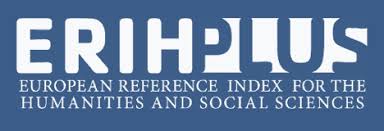№2, 2025
In a modern society where the electronic government is being formed, state institutions and various commercial structures are trying to study and assess the behavior, interests, role and reputation of citizens in society based on personal data arrays. However, when people die, the information collected about them loses its immediate significance for current operational purposes. As a rule, this information is deleted or archived in accordance with the established protocols for data storage and legislative requirements for the protection of personal data of deceased persons. In the context of preserving national and cultural heritage, restoring historical memory and in-depth study of society, the process of collecting, structuring, and processing information about deceased persons is of particular importance. The concept of creating a digital twin of a deceased person by linking and processing different data represents an innovative approach to effectively immortalizing them. This article defines the role of information technologies in the preservation of cemeteries, explains the essence of the digital cemetery concept, and presents the general structure of the digital cemetery system. It determines the importance and potential prospects of the digital cemetery system for society, and develops proposals for its effective operation (pp.25-38).
- Agostini, A. L. C., Manfroi, C., Pereira, R., Da Costa, E. M., Dos Santos, N. (2024). Cemetery: More Human, Intelligent, and Sustainable. In 2024 International Conference on Intelligent Environments (IEEE), 132–138. DOI: 10.1109/IE61493.2024.10599898
- Alguliyev, R.M., Jafarov, Y.M., Gurbanova, A.M. (2022). Conceptual basis for creation of national toponymic geographic information system. Problems of Information Society, 13(1):3–10. http://doi.org/10.25045/jpis.v13.i1.01
- Arulnathan, V., Heidari, M.D., Doyon, M., Li, E.P.H., Pelletier, N. (2023). Economic Indicators for Life Cycle Sustainability Assessment: Going beyond Life Cycle Costing. Journal Sustainability. 15(1), 13, doi: 10.3390/su15010013
- Bayramov I. Western Azerbaijan: Historical truths or Armenia’s ethnic cleansing policy, Baku: 2011, 288. (in Azerbaijani)
- Betsworth, L., Bowen, H., Robinson, S., Jones, M. (2014). Performative technologies forheritage site regeneration. Personal Ubiquitous Comput. 18(7), 1631-1650. http://dx.doi.org/10.1007/ s00779-014-0766-3
- BillionGraves, 2021. https://billiongraves.com/
- Chen, L., Nugent, Ch. D., Wang, H. (2012). A Knowledge-Driven Approach to Activity Recognition in Smart Homes, IEEE Transactions on Knowledge and Data Engineering, 24(6): 961– 974. DOI: 10.1109/TKDE.2011.51
- Chircu, A., Friedmann, D., Pomaskow, J., Czarnecki, Ch., Sultanow, E. (2023). Towards a Digital Twin of Society. Proceedings of the 56th Hawaii International Conference on System Sciences. 10:1-10. https://hdl.handle.net/10125/103450
- Chu, N. (2015). Protecting privacy after death. Northwestern Journal of Technology and Intellectual Property.13, 255 p. https://scholarlycommons.law.northwestern.edu/njtip/vol13/iss2/8
- Ciolfi L., (2013). Co-Designing Tangible Interactions at Sheffield General Cemetery, meSch: Heritage, http://mesch-project.eu/co-designing-tangible-interactions-at-sheffield-general-cemetery/
- Current status of Azerbaijani monuments in Yerevan, https://www.qafqazinfo.az/news/detail/irevandaki-azerbaycan-abidelerinin-hazirki-veziyyeti-fotolarvideo-362772 (in Azerbaijani)
- Das, S., Konar, A. (2009). Automatic image pixel clustering with an improved differential evolution. Applied Soft Computing. 9(1): 226–236. https://doi.org/10.1016/j.asoc.2007.12.008
- Digital Graveyards Project, http://jiwani.concordia.ca/ cybermemorial/
- Digital monument, https://www.rahmat.az/ (in Azerbaijani)
- Gamba, F. (2020). The Right to be Forgotten and Paradoxical Visibility. Privacy, Post-privacy and Post-mortem Privacy in the Digital Era. Problemi dell'informazione, 45(2), 201–220. https://doi.org/10.1445/97791
- Girosi, F., King, G. (2007). Understanding the Lee-Carter Mortality Forecasting Method. https://gking.harvard.edu/files/lc.pdf
- Johan, B. (2022.). A semantically annotated corpus of tombstone inscriptions. International Journal of Digital Humanities, 3, 1–33, https://doi.org/10.1007/s42803-021-00039-y
- Jonna, H. Petri, H., Elina, L., Emilia, L., Sanni, M., Toni W., Ashley, C. (2019). Visiting a Virtual Graveyard - Designing Virtual Reality CulturalHeritage Experiences. Conference: the 18th International Conference, UM 2019, November 26–29, 2019, Pisa, Italy, 1-4. DOI: 10.1145/3365610.3368425
- Jonna, H., Meri-Tuulia, F., Ashley, C. (2018). Navigating the Graveyard: Designing Technology for Deathscapes. Conference: the 17th International Conference, MUM '18, November 25–28, 2018, Cairo, Egypt. 1-6. DOI:10.1145/3282894.3282912
- Kleinow, T. (2015). A common age effect model for the mortality of multiple populations. Insurance: Mathematics and Economics, 63: 147–152. https://doi.org/10.1016/j.insmatheco.2015.03.023
- Kleinow, T. (2015). A common age effect model for the mortality of multiple populations. Insurance: Mathematics and Economics, 63: 147–152. https://doi.org/10.1016/j.insmatheco.2015.03.023
- Lanza, J. (2012). Demography from physical cemeteries, “virtual cemeteries,” and census data. Teaching Issues and Experiments in Ecology, 8. https://tiee.esa.org/vol/v8/experiments/lanza/pdf/lanza.pdf
- Law of the Republic of Azerbaijan No. 94-IIIQ dated April 21, 2006, “On the State Register of the Population of the Republic of Azerbaijan” https://e-qanun.az/framework/12187. (in Azerbaijani)
- Li, N., Lee, R. (2005). Coherent mortality forecasts for a group of populations: an extension of the Lee–Carter method. Journal Demography. 42(3): 575–594. https://doi.org/10.1353/дем.2005.0021
- Nakagawa, H., Orita, A. (2024). Using deceased people’s personal data. Ai & Society, 39(3), 1151–1169. https://link.springer.com/article/10.1007/s00146-022-01549-1
- Nordh, H.; Evensen, K.H. (2018). Qualities and functions ascribed to urban cemeteries across the capital cities of Scandinavia. Urban For. Urban Green. 33, 80–91. https://doi.org/10.1016/j.ufug.2018.01.026
- Perla, F., Richman, R., Scognamiglio, S., Wüthrich, M. V. (2021). Time-series forecasting of mortality rates using deep learning. Scandinavian Actuarial Journal, 2021(7): 572-598. http://dx.doi.org/10.2139/ssrn.3595426
- Pulver, D.V. (2023). When the dead don't stay buried: The grave situation at cemeteries amid climate change. USA TODAY. https://www.usatoday.com
- Resolution of the Cabinet of Ministers of the Republic of Azerbaijan on approval of the “Rules for the Construction and Management of Cemeteries, https://e-qanun.az/framework/40898 (in Azerbaijani)
- Roberts, S. E., Goldacre, M. J. (2003). Time trends and demography of mortality after fractured neck of femur in an English population, 1968–98: database study British Medical Journal., 327(7418), 771-775. https://doi.org/10.1136/bmj.327.7418.771
- Säumel, I., Butenschön, S., Kreibig, N. (2023). Gardens of life: Multifunctional and ecosystem services of urban cemeteries in Central Europe and beyond—Historical, structural, planning, nature and heritage conservation aspects. Frontiers in Environmental Science, 10, 1077565. https://doi.org/10.3389/fenvs.2022.1077565
- Şchiopu, S. D. (2022). Personal Data Processing within a Smart Cemetery. Law Review, (02), 136–142. https://www.ceeol.com/search/article-detail?id=1090148
- Schmidt, M. L., Yuan, F., Jang, W. (2022). Cemetery Mapping and Digital Data Analysis: A Case Study in Minnesota, USA. Journal of Geography and Geology, 12(2), 1–40. https://ideas.repec.org/a/ibn/jggjnl/v12y2022i2p40.html
- Statement of the Milli Majlis of the Republic of Azerbaijan on the 100th anniversary of the genocide of Azerbaijanis, March 2018, https://e-qanun.az/framework/38494 (in Azerbaijani)
- Stine, G. (2015). Privacy with public access: digital memorials on quick response codes. Information, Communication & Society 18(3), 269-280. https://doi.org/10.1080/1369118X.2014.989250
- Swensen, G. (2018). Between romantic historic landscapes, rational management models and obliterations—Urban cemeteries as green memory sites. Urban For. Urban Green. 33, 58–65. https://doi.org/10.1016/j.ufug.2018.04.013
- Troyer, J., Shots, C., Vale, A. (2012). Future cemetery project http://old.react-hub.org.uk/heritagesandbox/projects/2012/the-future-cemetery/
- Zagheni, E. (2017). Data Science, Demography and Social Media: Challenges and Opportunities, https://pdfs.semanticscholar.org/presentation
- Zerkouk, M., Chikhaoui B. (2019), Long Short-Term Memory Based Model for Abnormal Behavior Prediction in Elderly Persons, Proceedings of the International Conference on Smart Homes and Health Telematics: How AI Impacts Urban Living and Public Health; October 14-16, 2019; New York, NY. 36–45. https://link.springer.com/chapter/10.1007/978-3-030-32785-9_4
- Zhang, Y., Deng, L., Zhu, H., Wang, W., Ren, Z., Zhou, Q., Lu, S., Sun, SH., Zhu, Z., Gorriz, J.M., Wang, Sh. (2023). Deep learning in food category recognition. Information Fusion, 98. doi: 10.1016/j.inffus.2023.101859





.jpg)









